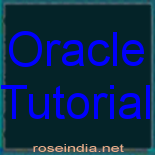In this section we will discuss in detail about every aspect of Oracle Database including its versions, features, architecture and tutorials. It will help beginners and professionals learn different aspects of Oracle.
Body:
Oracle Database is an Object Relational Database Management System (ORDBMS) where data is stored as tablespaces. It is flexible and cost-effective. In Oracle data is stored in tables and is known as unit. Tasks that can be performed on a table is Select, Insert, Update, Delete, etc.
Oracle Database is used to store and recover information. It maintains a large amount of data is such a way that several users can access the same data at the same time without compromising the performance. A database server acts like a multiuser environment and provides efficient solutions for failure recovery.
Oracle Architecture:
Oracle Database is based on Grid computing, which is a flexible way of managing applications. In here capacity can be added or reallocated from the resource pools as needed. Oracle Database has two types of structure: Logical and Physical. It provides dedicated hardware resources, massive systems that are flexible and cheap.
Benefits of Oracle Grid Architecture:
- Higher quality of service results
- No failure
- Robust Security Infrastructure
- Centralized Management
- Lower management and maintenance cost
- Increased utilization of Resources
- Resources are pooled and allocated on demand
- Flexibility in resources in accordance with changing needs
Oracle RDBMS comprises of many concepts:
- Understanding of Storage
- Partitioning
- Monitoring
- Disk files
- Database schema
- System Global Area
- Library cache
- Data dictionary cache
- Process architectures
Features of Oracle Database:
- Direct NFS Client
- Active Storage Management (ASM)
- Real Application Clusters (RAC)
- Table and Index Partitioning
- Real Application Testing
- Virtualization Support
- Data Guard
- Flashback Technology
- Index Key Compression
- RMAN Backup Compression
- Storage Efficiency
- Oracle Database Vault for SAP
- Deferred Segment Creation
- Includes semi-autonomous S/W sub-systems
- Automatic Workload Repository (AWR)
- Data Aggregation and Consolidation
- Fast-start parallel rollback
- Security
- Data Integrity and Triggers
Versions of Oracle Database:
Version of Oracle database is a combination of letters and numbers. 'g', 'c' and 'i' prefixes are used, where 'g' stands for Grid, 'i' stands for Internet and 'c' stands for cloud. Versions of Oracle are as follows:
- Oracle v2
- Oracle v3
- Oracle v4
- Oracle v5
- Oracle v6
- Oracle v7
- Oracle v8
- Oracle 8i
- Oracle 9i
- Oracle 10g
- Oracle 11g
- Oracle 12c - (June 2013)
Resources:
